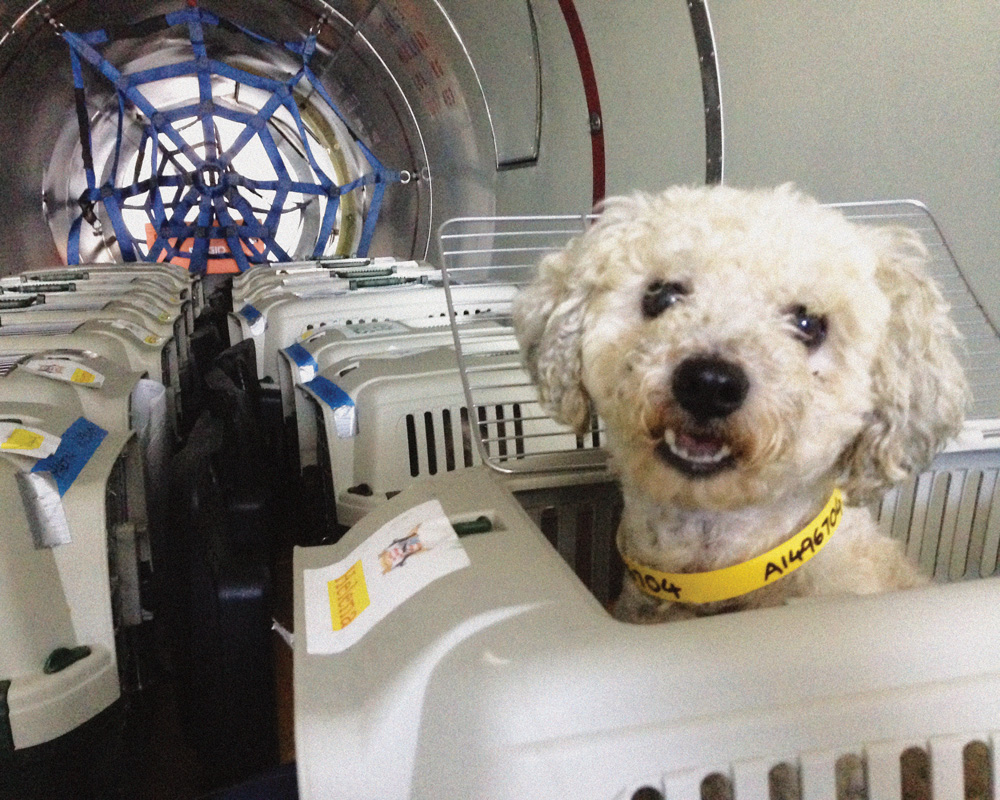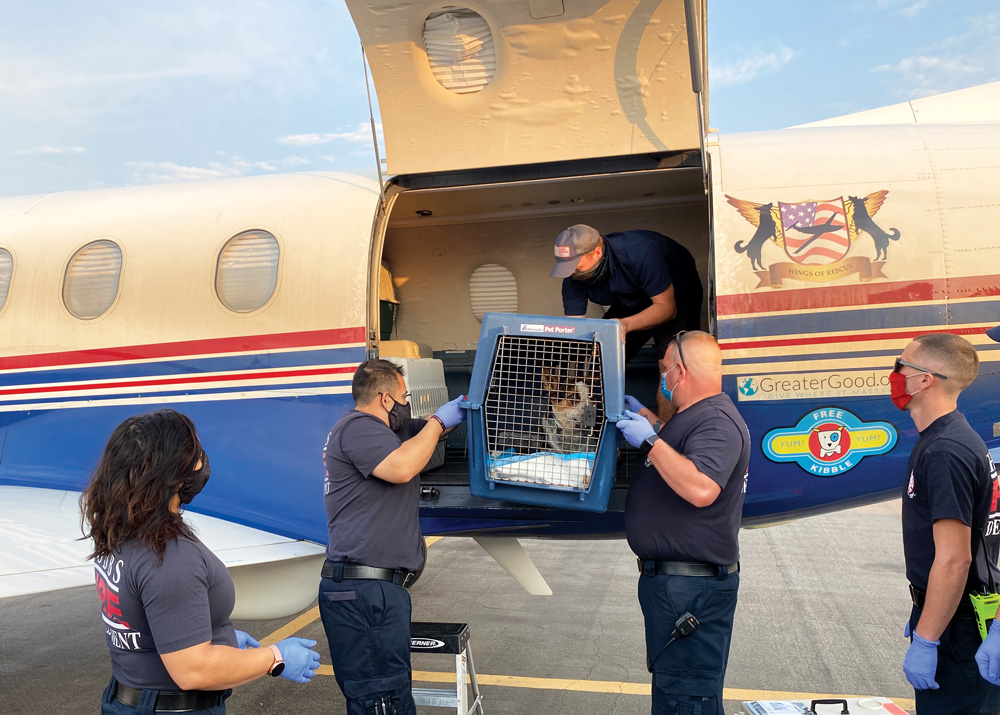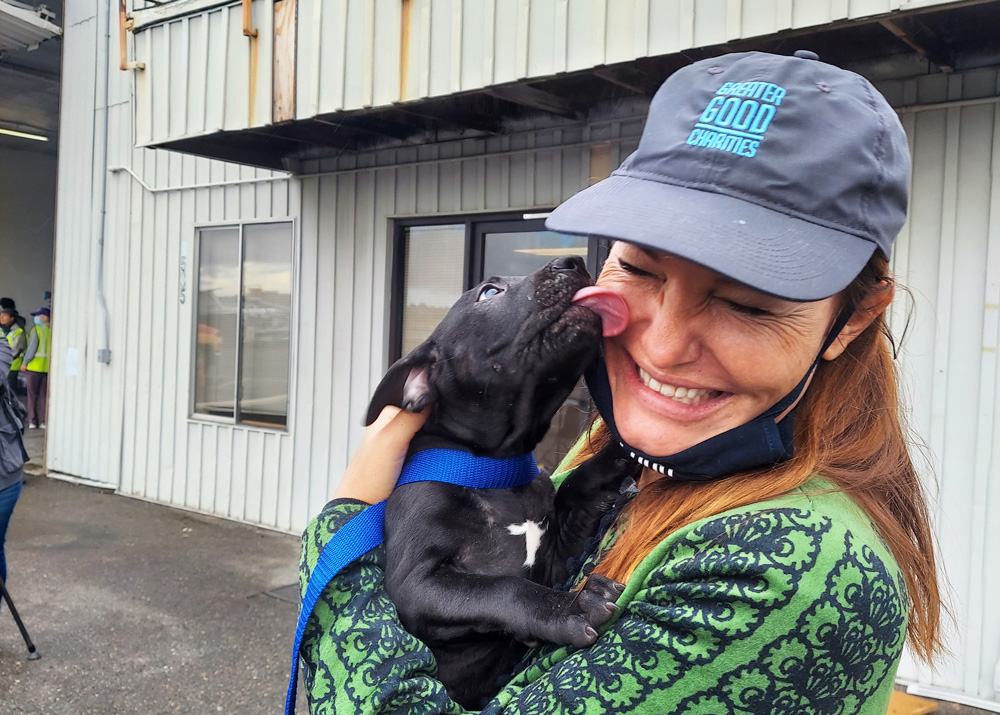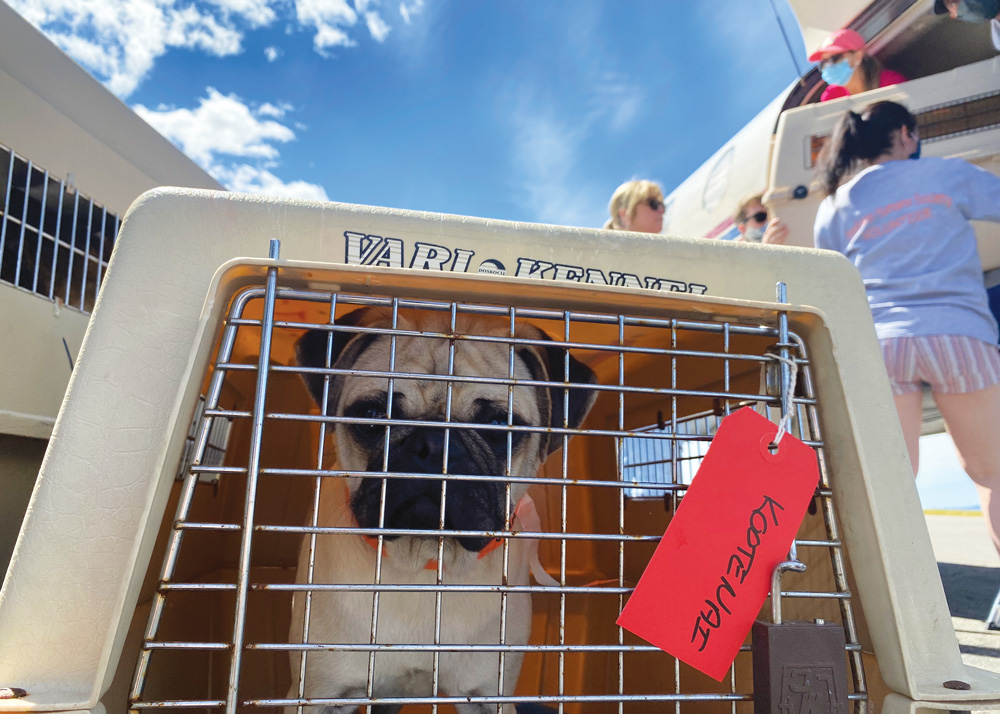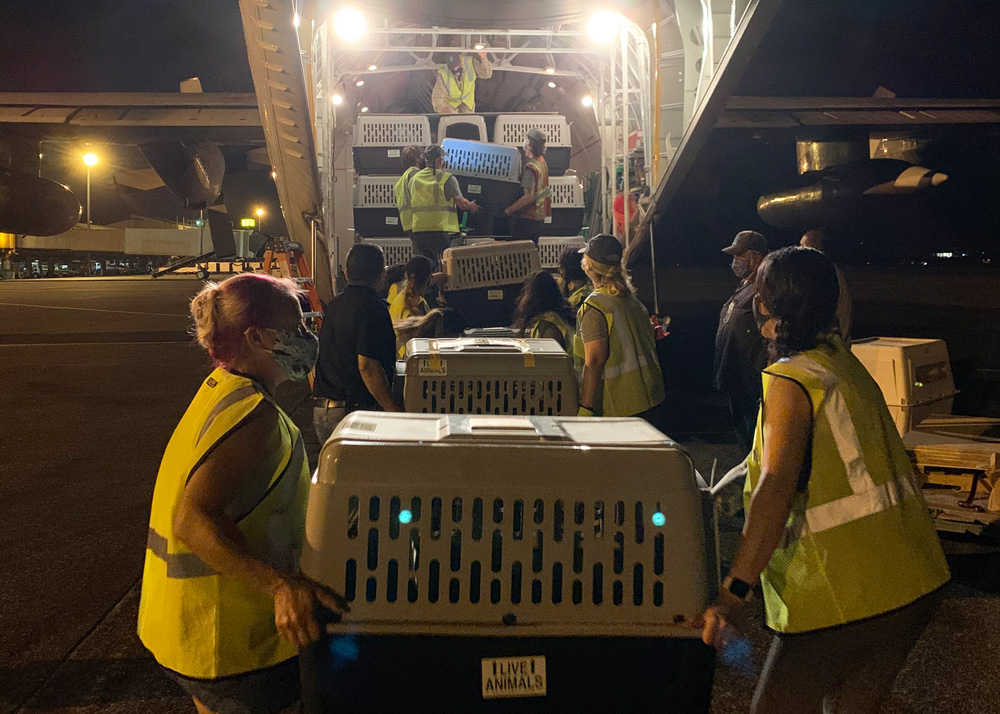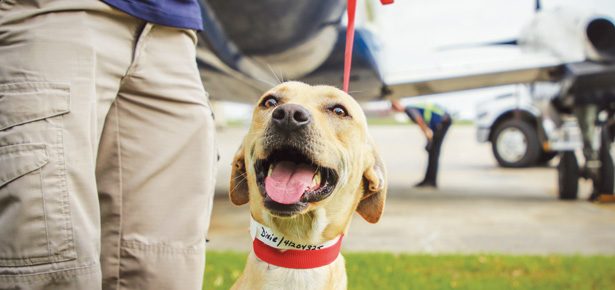
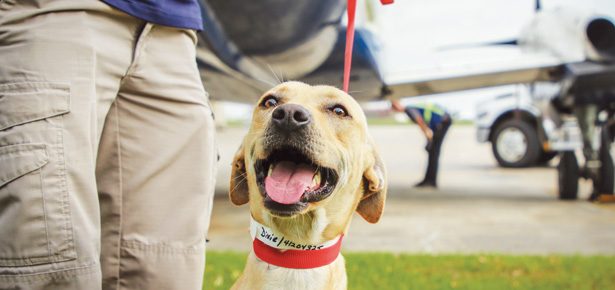
Precious Cargo: More Than 600 Dogs and Cats Airlifted Out of Hawaii and Put Up For Adoption
Rescue dogs airlifted from overcrowded shelters and disaster areas to awaiting homes
Over 600 pets were airlifted from the Hawaiian Islands to Seattle in the largest pet rescue flight in history, dubbed Paws Across the Pacific. This isn’t the first flight that Wings of Rescue has flown, but it is the biggest.
Ric Browde, CEO of the non-profit organization, has been flying animals from peril (disaster areas and overcrowded shelters across the U.S.) to safety since he joined Wings of Rescue in 2013. Wings of Rescue, in partnership with organizations such as Greater Good Charities, the ASPCA, and Humane Societies, has now flown more than 40,000 pets to safe havens across the U.S. and Canada.
In fact, it is the only donation-based charity to fly this number of pets to safety.
In the first ten months of 2020, Wings of Rescue transported a whopping 8,142 pets from disaster areas and overcrowded shelters a distance of 27,942 miles on 105 flights, and they have delivered 40,290 pounds of humanitarian aid to earthquake damaged shelters in Puerto Rico. And that’s even with being grounded for 10 weeks because of COVID-19. Ric runs a well-oiled machine.
Most Wings of Rescue's flights carry 100 or so pets at a time. Their record evacuation (before the Hawaii run) was 278 animals rescued from Memphis to shelters in the Pacific Northwest.
“It’s an expensive ride, but our passenger satisfaction rate is better than any other airline. And our passengers are cuter, friendlier, and often better behaved than those flown by other airlines,” Ric says, laughing. “Once we hit 3,000 meters [above sea level] all the dogs fall asleep, like someone waves a magic wand. And when we start our descent, it’s like having a plane full of three-year-olds asking, ‘Are we there yet?’ Then they all wake up at the same time.”
From January until October 2020, Wings flew 102 times, and they took 10 weeks off for COVID. “We have six volunteer pilots. Their leased PC12 plane (a single-engine turboprop aircraft) has been grounded so Wings is chartering cargo aircraft until another PC12 becomes available. “Sure, it’s way more expensive to charter but consider what you can do with that money, how many pets can be saved,” says Ric.
Ric flies “shotgun,” accompanying the pilots on most major runs. His function is more about animal care and logistics; he tends to the pets on the flight, sometimes using Rescue Remedy and homeopathic treatments to calm his precious cargo. For the most part, dogs behave well in their crates, “but if we see a dog getting fractious, disruptive, and anxious, chewing at their crates (sometimes Pit Bulls get too hyped up) we will respectfully say sorry, they cannot be transported.”
The PC12 plane requires refueling on some trips, such as the flight to Victoria, Canada last July from southern California. “We want the dogs to be as comfy as possible so we looked for the coolest place, temperature wise, to land. The fastest route was Arizona but every step of the way we think about dog comfort, including bedding in crates and pilots with a level of compassion and care, so we took a short detour to San Diego. Ideally, we want pilots with their own pressurized planes. We want to be able to fly over mountains and don’t want pets with oxygen masks. Pets are in the cabin with us on all the PC12 flights, rather than cargo, so they are literally breathing the same air as us.
This is how Ric figures out how many dogs will fit into the plane. “It’s more about calculating the volume of crates and we base dog weight on a point system. For instance, a 20-pound or less dog is designated one point; a 40-pound and above dog is six points. A great Dane would be 10 points because it needs 51 inches of vertical space. The PC12 can handle 106 points—maximum.”
Being a donor-based charity, Ric says Wings of Rescue relies on the kindness of strangers. “I am amazed when people ask me why I do this,” he says. “Everyone has the power to do good and if everyone did that we could make a difference in this world. We support any rescue that is done responsibly. So get off your couch and help someone out.”
Liz Baker, CEO of Greater Good Charities, with her newly adopted pup Hilo. (Photo courtesy of Greater Good Charities)
Paws Across the Pacific
Paws Across the Pacific achieved nothing short of a miracle. The coordinated effort was led by Greater Good Charities, Wings of Rescue, and John R Peterson Foundation involving more than 100 people and several pet shelters on both sides of the pond, as well as the Hawaii Veterinary Medical Association to ensure the safety and health of pets on the flight.
The operation was also more complex than Ric’s usual trips, loading an average 150 pets into a few planes. The Greater Good Charities’ shelter experts and engineers have designed the load for stability, while working with veterinarians and cat behaviourist (and Greater Good Charities board member) Jackson Galaxy to ensure the comfort and safety of pets on the flight. The crates were stacked on pallets then netted so they don’t move. Pets were picked up at five islands so the team’s biggest challenge was getting loaded quickly, then just over seven hours across the pond to Seattle.
Seven shelters in Hawaii sent pets to about 12 or so shelters. “The Hawaii government has been wonderful, cutting through red tape getting vehicles to the airport on time,” adds Ric. “They really wanted to make it work.”
“At the end of August I got a call from the John R. Peterson Foundation, asking what I needed during the pandemic,” says Mirah Horowitz, executive director, Kauai Humane Society. “I needed a plane.” Her pipe dream turned into a statewide mission that happened almost overnight. The Foundation called on Wings of Rescue and Greater Good Charities—the latter secured transport clearances through the state via its disaster response program.
Sisters Phylis and Moki, age 10, were on the flight. The hound-mix girls were surrendered by their owner in July. “They were so sweet and favourites of the staff and volunteers,” says Mirah. “We have mixed emotions…they will be missed but we are happy they are getting adopted. Two other sisters, Cindy and Lindy, are also hound mixes that we had for a long time. They were both strays and so shy they hid at the back of the kennels. Now they come up to us and walk on leashes—we are so excited for them.
“We are so grateful for everyone who made this rescue flight possible—they are lifesavers. We do everything not to euthanize but our shelter is full. Now we have room for feral and street animals—I think our shelter will fill up in no time.”
“Ric has given all receiving seven shelters a list of animals with their basic information, including size, age, and breed mix. We don’t discriminate, but we usually take a mix of small breeds and senior dogs, and there are always some bully breeds,” says Lisa Hockins, PAWS Shelter Operations Manager in Lynwood, Washington. She has been with PAWS shelter 14 years and has worked with Ric for most of those years. “All the shelters work together and if a few animals aren’t ticked off the list, Ric will assign them. It always works out.”
“Any Wings of Rescue transport is well organized—no hiccups,” adds Lisa. “We all meet at the airport where everyone is labeled. We collect the animals, move them directly to the shelters, and do health checks.”
Forever Homes
On an earlier mission in July 2020, Wings of Rescue flew 28 dogs from Mexico to Victoria, B.C. “A friend in Bellingham, Washington got in touch with Wings and two of their pilots, Kale and Anji Garcia in Bend, Oregon, contacted me—they made it happen,” says Marlene Davis of Mex-Can Pet Partners in Victoria.
Kale and Anji have their own plane and have been volunteering with Wings of Rescue since the beginning.
“They worked on the logistics that the dogs needed to come to Canada, such as vaccine worming, flea and tick treatment—they do their homework. And they don’t want to pass on a problem such as behaviour and health issues. Ric is extremely conscientious.”
“The only problem with Chesley is that everyone wants him,” says Deb Wellburn, a corporate flight attendant, who adopted one of the Wings transport dogs. It was love at first sight, even through the crate. She was working at the Shell AeroCentre, which provides corporate aircraft services at Victoria airport, when Wings landed. She saw a volunteer open a crate (the dogs had just been taken out of cargo). “The volunteer took this beautiful dog for a walk. His top half is Golden Retriever and the bottom half Corgi, perfectly imperfect,” says Deb. The volunteer told Deb that she had to apply to adopt through Mex-Can Pet Partners, which she did that night. “I can’t say enough about Marlene Davis and her rescue. She excels in finding forever homes. Chesley is our first rescue and so adorable, so willing to please. We don’t know much about his background except Marlene said he was found on a rooftop with another dog—they were abandoned. We were surprised at how well he gets along with everyone, including people, horses, and other dogs. He walks by our side, loves to roll in grass, loves routine, climbs onto our boat no problem and he seems always excited to be with us.
“I now encourage people to apply for a rescue dog. A pilot and two other workmates have already applied. As well, I talked to my boss: he said Wings of Rescue can always park here. When the dogs landed it was a super-hot day. A tent was pitched outside but my company let everyone come into our air-conditioned building. Even our cleaning lady was so excited—she didn’t care if they piddled. And it was wonderful talking to people being united with their pets. I can’t wait for the next rescue!”
Recently, Wings of Rescue, in conjunction with the Sato Project, flew 116 rescue animals from Puerto Rico after the horrific earthquake that left shelters dealing with damage or overcrowding after owners surrendered their pets. The flight made stops in Delaware, New Jersey, and Florida. The animals were relocated to shelters in those states as well as Pennsylvania and New York. “It’s goosebumps and tears. The minute you hear those doors open. It’s just an incredible feeling knowing those animals may not have been alive had it not been for that mission,” Linda Torelli, Marketing Director of the Brandywine Valley SPCA in Pennsylvania told Fox News. That SPCA took in more than 30 dogs.
"There’s a huge variety that came up on the flight. We’ve got little babies all the way up to adults of about five to six years old," said Linda. After reading about the rescue, the Oakley family went to the rescue and went home with Zule, the first Puerto Rico earthquake survivor at the shelter to find a new home.
“It just makes me feel good to rescue dogs,” Julie Oakley told Fox. According to SPCA officials, the animals would have likely been euthanized because of limited space and a lack of food and water on the island.
Wings of Rescue is a donation-based charity flying large-scale transports of at-risk shelter pets from overcrowded shelters and disaster areas to brick and mortar shelters where there is empty kennel space. No local shelter pets are displaced by the flights. Since it began to “Let The Fur Fly” in 2013, Wings of Rescue has flown more than 40,000 pets to safety. To donate, please visit wingsofrescue.org/donate.
Join the newsletter and never miss out on dog content again!
"*" indicates required fields
By clicking the arrow, you agree to our web Terms of Use and Privacy & Cookie Policy. Easy unsubscribe links are provided in every email.
